There has been a paper a couple years ago that argued that a change in the in the incoming cosmic rays may modify the viscosity of the mantle and perhaps induce a cycle of high volcanism. Maybe these events are a prelude or the beginning of such a cycle.
You are using an out of date browser. It may not display this or other websites correctly.
You should upgrade or use an alternative browser.
You should upgrade or use an alternative browser.
Volcanoes Erupting All Over
- Thread starter Laura
- Start date
Latest report from same site regarding Fagradalsfjall volcano9Lo loA report from today about th8e situation in Iceland. It is centered just south of the capital Reykjavik, around which 2/3 of the Icelandic population lives. It is apparently complex as there are 3 volcanoes, one of which has no known eruption history in the last 10000 years
Update on Fagradalsfjall volcano activity on 7-March-2021 at 00:21 UTC
This is a short update on activity in Fagradalsfjall volcano. This is mostly on the activity on 6-March-2021.
Overview of current activity
Earthquake activity is mostly limited to small earthquakes.
Risk of eruption has not been reduced with current change in activity.
The magma dyke is at the shallowest on 2 km but it has an average depth of 5 km to 8 km depth.
Most of earthquake activity is closest to Fagradalsfjall mountain (north end?). The dyke is situated between Fagradalsfjall mountain and Keilir mountain.
(Curious, 2000 years were added between reports)Fagradalsfjall volcano has not erupted in last 12000 years.
There has not been any magma activity observed in Krýsuvík volcano and Reykjanes volcano (Svartsengi volcano?). All earthquake activity in those volcanoes are due to crust stress changes due to inflation from Fagradalsfjall volcano.
The area of activity according to Icelandic Met Office. This might also be the Fagradalsfjall volcano. Copyright of this image belongs to Icelandic Met Office.
There remains a high risk of a strong earthquake with magnitude between Mw6,0 to Mw6,5 because of crustal stress changes that are connected to all the inflation that is now taking place in Fagradalsfjall volcano.
Harmonic tremor has not been detected again since Wednesday but that might change without warning.
Whole country (Iceland) - earthquakes during the last 48 hours (Preliminary results)
Earthquake location 07 Mar 05:30 GMT
Time and magnitude of earthquake 07 Mar 05:30 GMT
There has been a paper a couple years ago that argued that a change in the in the incoming cosmic rays may modify the viscosity of the mantle and perhaps induce a cycle of high volcanism. Maybe these events are a prelude or the beginning of such a cycle.
I think this may be the paper / article you are referring to:
Is there a connection between cosmic rays, earthquakes and volcanic eruptions?
Scientists have detected a correlation between historic solar minima, volcanic activity, sun spots and climate change....
...Volcanic activity may be attributed to the increase in Galactic Cosmic Rays penetrating deep into silica rich volcanoes. Several studies have shown this correlation along with historical evidence.
As the SOTT comment on the aforementioned article notes:
Correlation clearly does not equal causation but there does appear to be a link with all these phenomena and the increasingly erratic behaviour of weather and geologic activity on our planet.
XPan
The Living Force
Etna goes 10th Paroxysm

This morning
at around 07.30 - Etna started it's 10th Paroxysm since 16 Jan 2021. In the Tremor chart below, where I put all the earlier events together, you see them now in a row. Black letters for night time eruptions, white letters for daytime eruptions.

The ash covering East Coast of Sicily
where in the village of Fornazzo (10 km E from the crater) got huge boulders (the size of tennis bolls) raining down, and in the coastal town of Giarre / Riposto (17 km E from the crater), the streets where completely covered by black ash and lapilli which you can see in the photos from Giarre below.




Ash cloud remnants over Antalya, Turkey at 18:00
In the following photos I wanted to illustrate the movement of the ash cloud from Etna, going towards the east (at 08.11-10:09). I traced it further on IR satellite, where it reached at 13.35 the City of Athens, Greece. Hovering over the east coast of Turkey at 16:00 and later, barely detectable, remnants visible over Antalya, South Coast of Turkey at 18:00



A few eruption photos
There was a prominent cover of low clouds streching from the southern region of the Volcano, covering Catania, and going all the way up along the east coast of Sicily - so from there it was basically invisible. Overcast skies from videos in Giarre I have seen, made an strong impression due to the lapilli audibly falling down like black hailstones from the sky. The skies were clear to the west and north of the Volcano. So, it means most photos you see here, with the ash column clearly rising, must been taken from the west, towards Etna and the rising sun over the east (sea) behind.



This morning
at around 07.30 - Etna started it's 10th Paroxysm since 16 Jan 2021. In the Tremor chart below, where I put all the earlier events together, you see them now in a row. Black letters for night time eruptions, white letters for daytime eruptions.
The ash covering East Coast of Sicily
where in the village of Fornazzo (10 km E from the crater) got huge boulders (the size of tennis bolls) raining down, and in the coastal town of Giarre / Riposto (17 km E from the crater), the streets where completely covered by black ash and lapilli which you can see in the photos from Giarre below.
Ash cloud remnants over Antalya, Turkey at 18:00
In the following photos I wanted to illustrate the movement of the ash cloud from Etna, going towards the east (at 08.11-10:09). I traced it further on IR satellite, where it reached at 13.35 the City of Athens, Greece. Hovering over the east coast of Turkey at 16:00 and later, barely detectable, remnants visible over Antalya, South Coast of Turkey at 18:00
A few eruption photos
There was a prominent cover of low clouds streching from the southern region of the Volcano, covering Catania, and going all the way up along the east coast of Sicily - so from there it was basically invisible. Overcast skies from videos in Giarre I have seen, made an strong impression due to the lapilli audibly falling down like black hailstones from the sky. The skies were clear to the west and north of the Volcano. So, it means most photos you see here, with the ash column clearly rising, must been taken from the west, towards Etna and the rising sun over the east (sea) behind.
XPan
The Living Force
Mama Etna goes 11th Paroxysm
in this very moment (after midnight, 10 March 2021).
Unfortunately, the weather is overcast over large parts of Sicily, and there is barely anything visible on webcams around the volcano. The few that might be above the clouds - but the servers are down (www.skylinewebcams.com). So, I can only show Infrared Satellite photo of the ash cloud (albeit IR satellites do not show low clouds). And then there is the tremor chart. The webcam from Giarre, located at the east coast of Sicily, shows very little of the eruption, but better than nothing.

It appears that Etna already started a little yesterday evening (with so called "Strombolian activity"), but then went down - only then to fully discharge the Paroxysm after midnight. The ash cloud became visible at around 01:00 in the satellite charts. It may have done so a bit earlier, but a weather front went through the same area, and I was not able to distinguish clouds from a possible ash clouds before 01.00.
Paroxysms at Etna far more common !
If I thought that this behavior of the Etna Volcano was unusual - it appears not to be the case. In the years of 2011-13 Etna had 50 Paroxysms, and in year 2000 alone 66 Paroxysms (if the numbers are to be trusted). Apparently these Paroxysms have been common at Etna since the 70s.


in this very moment (after midnight, 10 March 2021).
Unfortunately, the weather is overcast over large parts of Sicily, and there is barely anything visible on webcams around the volcano. The few that might be above the clouds - but the servers are down (www.skylinewebcams.com). So, I can only show Infrared Satellite photo of the ash cloud (albeit IR satellites do not show low clouds). And then there is the tremor chart. The webcam from Giarre, located at the east coast of Sicily, shows very little of the eruption, but better than nothing.
It appears that Etna already started a little yesterday evening (with so called "Strombolian activity"), but then went down - only then to fully discharge the Paroxysm after midnight. The ash cloud became visible at around 01:00 in the satellite charts. It may have done so a bit earlier, but a weather front went through the same area, and I was not able to distinguish clouds from a possible ash clouds before 01.00.
Paroxysms at Etna far more common !
If I thought that this behavior of the Etna Volcano was unusual - it appears not to be the case. In the years of 2011-13 Etna had 50 Paroxysms, and in year 2000 alone 66 Paroxysms (if the numbers are to be trusted). Apparently these Paroxysms have been common at Etna since the 70s.
Klyuchevskoy volcano has erupted, spewing lava over its northwestern slope.
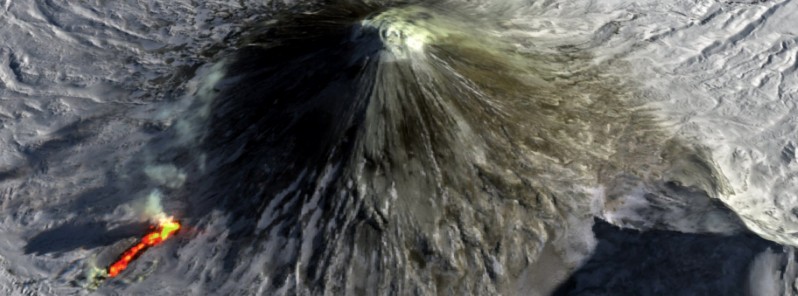
 watchers.news
Posted by Teo Blašković on March 9, 2021
watchers.news
Posted by Teo Blašković on March 9, 2021
Nicaragua's San Cristobal volcano has erupted, showering the northwestern city of Chinandega in ash.
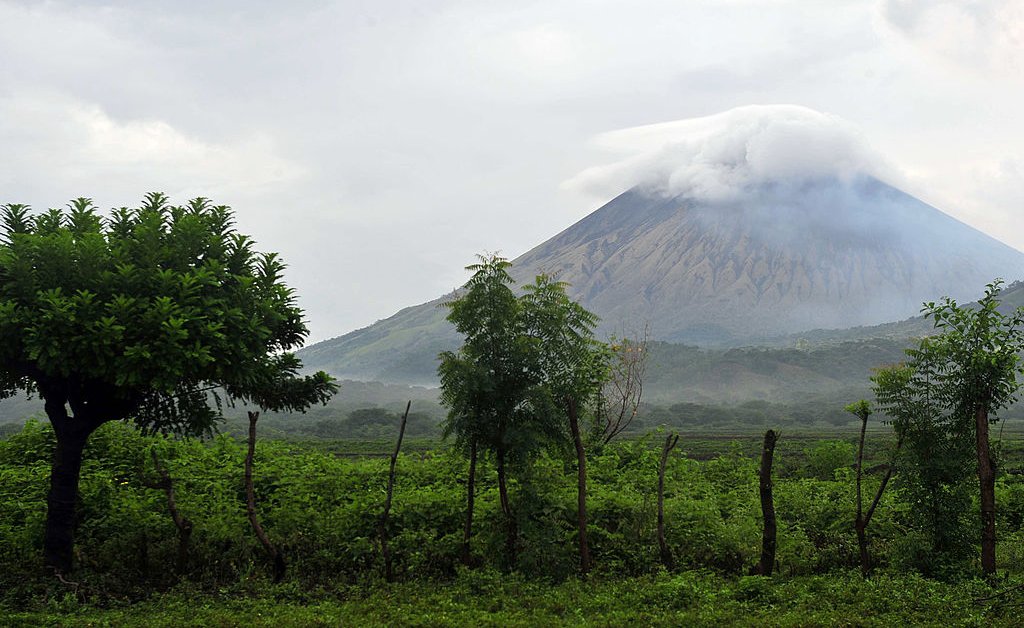
 time.com
MARCH 9, 2021
time.com
MARCH 9, 2021
Posted on 10.3.2021 (3:38)

Birth of new cinder dome at Klyuchevskoy volcano, Russia
A moderate flank eruption and a gas-steam activity continue at Klyuchevskoy volcano, Kamchatka, Russia. In addition, a new cinder cone started growing around February 25 with a small lava flow pouring…
Nicaragua's San Cristobal volcano has erupted, showering the northwestern city of Chinandega in ash.

Nicaragua’s San Cristobal Volcano Erupts and Showers City With Ash
Video from the scene showed dramatically reduced visibility in Chinandega Tuesday afternoon
Posted on 10.3.2021 (3:38)
XPan
The Living Force
A few Etna Videos
Sicily, 11th Paroxysm 10 March 2021
Sicily 10th Paroxysm 7 March 2021
Sicily, 11th Paroxysm 10 March 2021
Sicily 10th Paroxysm 7 March 2021
Chad
The Living Force
A short update on the significant uptick in seismic activity in Iceland from the Icelandic Met Office. (I wasn't sure whether to put this here or in the quake thread but since they're connecting it to the volcano, i thought here might be best.):
Fagradalsfjall volcano update: More than 34,000 quakes in two weeks
Wed, 10 Mar 2021, 15:29
15:29 PM | BY: T
The Icelandic Met Office (IMO) announced earlier today, that the total number of earthquakes in the region has exceeded 34,000 since the onset of the seismic swarm about 2 weeks ago.
For comparison, it had about 3,400 quakes in the whole of 2020, which also had shown elevated activity, while the average during the previous years was in the range of 1,000-3,000 quakes per year.
Image: Earthquakes on the Reykjanes peninsula during the past 2 weeks (image: IMO)

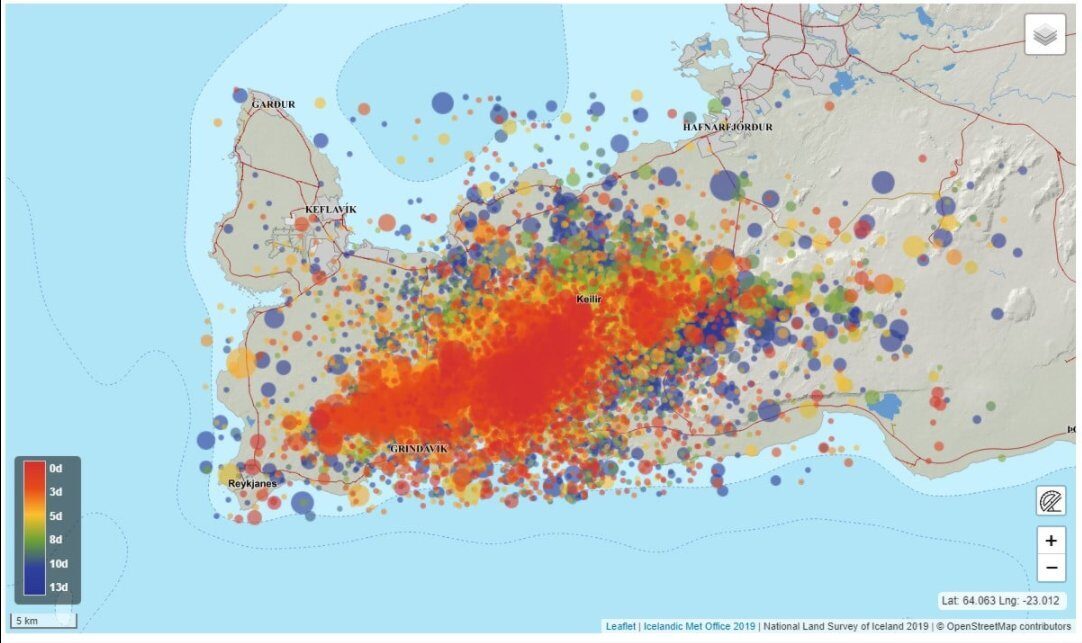
34,000 quakes in two weeks near Fagradalsfjall volcano, Iceland - 900% increase in activity compared with whole of 2020
The Icelandic Met Office (IMO) announced earlier today, that the total number of earthquakes in the region has exceeded 34,000 since the onset of the seismic swarm about 2 weeks ago. For comparison, it had about 3,400 quakes in the whole of 2020,...www.sott.net
Last edited:
jupiterbeings
Jedi
Fire trials incoming. The Spring Equinox will ramp things up for sure.
Ecuador's Sangay volcano has erupted, spewing ash 12.5 kilometers into the sky.
By: VN - 11 Mar 2021
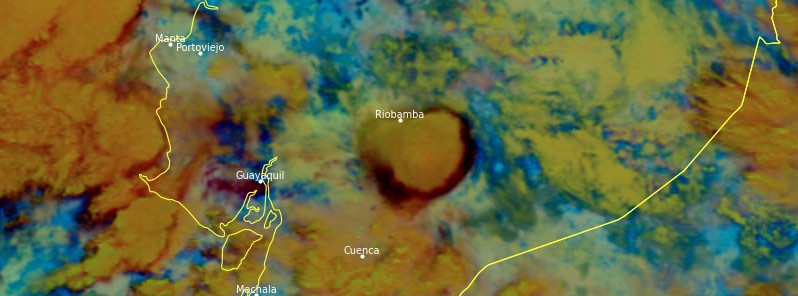
 watchers.news
Posted by Teo Blašković on March 11, 2021
watchers.news
Posted by Teo Blašković on March 11, 2021
Published on 11.3.2021 (2:10)
Sangay Volcano Volcanic Ash Advisory: EXPLOSIVE ERUPTION STARTING AT 11/0900Z to 41000 ft (12500 m)
Sangay volcano (Ecuador) eruption news & activity updates
www.volcanodiscovery.com

Significant explosive eruption at Sangay volcano, ash to 12.5 km (41 000 feet) a.s.l., Ecuador
A significant explosive eruption took place at Sangay volcano, Ecuador from 08:15 to 10:45 UTC on Thursday, March 11, 2021. According to the Washington VAAC, volcanic ash to 12.5 km (41 000 feet)…
Published on 11.3.2021 (2:10)
XPan
The Living Force
Etna goes 12th Paroxysm • 12 March 2021
since 16 Jan 2021
Etna blew again, and this time I was fully aware of that (likely) development - because as I ended my night shift this morning in Stockholm at around 06.00 - I saw how the Tremor chart was rising into the red zone. Already some hours before, Etna showed weaker Strombolian Eruption style ejections on webcams - which looked like that of the 3nd photo by vulcanologist Boris Behncke at INGV he took from his home in Trecastagni , 16 km (10 miles) south of the Volcano.


Boris Behncke © INGV 12 March 2021 at dawn (around 06.00)

Boris Behncke © INGV 12 March 2021 (i took the freedom of enhancing this image)

Boris Behncke © INGV 12 March 2021 (aprox 10.00-10.30)



INGV • Tremor Chart on Etna 5-12 March 2021
since 16 Jan 2021
Etna blew again, and this time I was fully aware of that (likely) development - because as I ended my night shift this morning in Stockholm at around 06.00 - I saw how the Tremor chart was rising into the red zone. Already some hours before, Etna showed weaker Strombolian Eruption style ejections on webcams - which looked like that of the 3nd photo by vulcanologist Boris Behncke at INGV he took from his home in Trecastagni , 16 km (10 miles) south of the Volcano.
Boris Behncke © INGV 12 March 2021 at dawn (around 06.00)
Boris Behncke © INGV 12 March 2021 (i took the freedom of enhancing this image)
Boris Behncke © INGV 12 March 2021 (aprox 10.00-10.30)
INGV • Tremor Chart on Etna 5-12 March 2021
Sakurajima volcano has erupted, spewing ash 2.1 kilometers into the sky.
By: VN - 13 Mar 2021
Published on 13.3.2021 (1:08)
Sakurajima Volcano Volcanic Ash Advisory: ERUPTED AT 20210313/0240Z FL070 EXTD SE OBS VA DTG: 13/0310Z to 7000 ft (2100 m)
Sakurajima volcano (Japan): news & eruption updates
www.volcanodiscovery.com
Published on 13.3.2021 (1:08)
Debra
The Living Force
In 24 hours to 00:00 UTC on March 15, the Taal Volcano Network recorded 252 volcanic earthquakes, including 17 episodes of volcanic tremor with durations of 1 to 4 minutes and 5 hybrid events, PHIVOLCS reports.
During the same period, activity at the Main Crater consisted of moderate emission of steam-laden plumes from fumarolic vents that rose 10 m (33 feet) high.
An upwelling of high-temperature volcanic gases at the lake's surface was observed last night from 18:30 to 20:45 LT.
Sulfur dioxide (SO2) emission that averaged 518 tonnes/day was measured yesterday, March 14.
Geological summary
Taal is one of the most active volcanoes in the Philippines and has produced some of its most powerful historical eruptions. Though not topographically prominent, its prehistorical eruptions have greatly changed the topography of SW Luzon.The 15 x 20 km (9 x 12 feet) Talisay (Taal) caldera is largely filled by Lake Taal, whose 267 km2 (103 mi2) surface lies only 3 m (9.8 feet) above sea level.
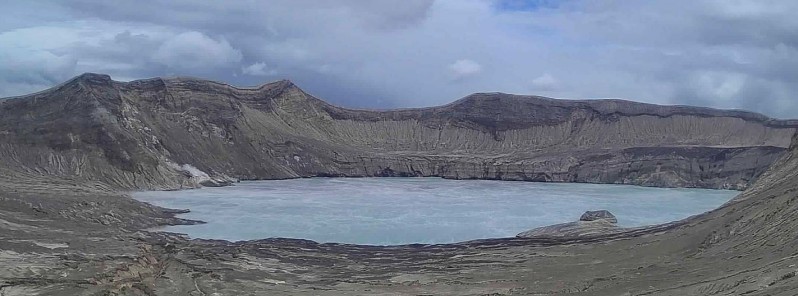
242 earthquakes in 24 hours, high-temperature volcanic gases at Taal volcano, Philippines
In 24 hours to 00:00 UTC on March 15, the Taal Volcano Network recorded 252 volcanic earthquakes, including 17 episodes of volcanic tremor with durations of 1 to 4 minutes and 5 hybrid events…
XPan
The Living Force
Oh yes. Mama Etna goes 13th Paroxysm
In what appears to be a highly regular manner, Etna performed it's 13th paroxysm around midnight between 14 to 15 March 2021; a short violent outbreak lasting an hour - in order to go "back to sleep". Well, at least for the naked eyes, I mean. The weather was bad, with lots of clouds as a minor cold front swooshed through the very area with high winds - which made the eruption column (ash cloud) almost impossible to spot on the satellite images. Also the lava fountains were not that very high.
Nevertheless, with an good eye, you were able spot the red glow among the towering clouds (especially when captured with a camera, which collects even fait light, making the scenery look brighter compared to the naked eye). However, I did not find any spectacular images, and show from what I gathered from webcams, and those my husband sent me he copied from Facebook.








In what appears to be a highly regular manner, Etna performed it's 13th paroxysm around midnight between 14 to 15 March 2021; a short violent outbreak lasting an hour - in order to go "back to sleep". Well, at least for the naked eyes, I mean. The weather was bad, with lots of clouds as a minor cold front swooshed through the very area with high winds - which made the eruption column (ash cloud) almost impossible to spot on the satellite images. Also the lava fountains were not that very high.
Nevertheless, with an good eye, you were able spot the red glow among the towering clouds (especially when captured with a camera, which collects even fait light, making the scenery look brighter compared to the naked eye). However, I did not find any spectacular images, and show from what I gathered from webcams, and those my husband sent me he copied from Facebook.
Trending content
-
Thread 'Coronavirus Pandemic: Apocalypse Now! Or exaggerated scare story?'
- wanderingthomas
Replies: 30K -
-
-
